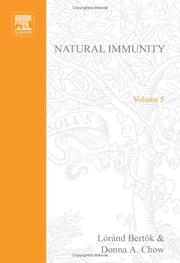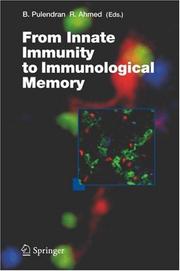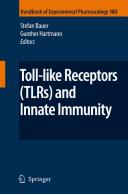| Listing 1 - 10 of 59 | << page >> |
Sort by
|
Book
Year: 2020 Publisher: Frontiers Media SA
Abstract | Keywords | Export | Availability | Bookmark
 Loading...
Loading...Choose an application
- Reference Manager
- EndNote
- RefWorks (Direct export to RefWorks)
This eBook is a collection of articles from a Frontiers Research Topic. Frontiers Research Topics are very popular trademarks of the Frontiers Journals Series: they are collections of at least ten articles, all centered on a particular subject. With their unique mix of varied contributions from Original Research to Review Articles, Frontiers Research Topics unify the most influential researchers, the latest key findings and historical advances in a hot research area! Find out more on how to host your own Frontiers Research Topic or contribute to one as an author by contacting the Frontiers Editorial Office: frontiersin.org/about/contact
plant disease resistance --- evolution --- molecular mechanism --- regulation mechanism --- diversification
Book
Year: 2018 Publisher: Frontiers Media SA
Abstract | Keywords | Export | Availability | Bookmark
 Loading...
Loading...Choose an application
- Reference Manager
- EndNote
- RefWorks (Direct export to RefWorks)
Legume crops provide an excellent source of high quality plant protein and have a key role in arable crop rotations reducing the need for fertilizer application and acting as break-crops. However, these crops are affected by a number of foliar and root diseases, being ascochyta blights the most important group of diseases worldwide. Ascochyta blights are incited by different pathogens in the various legumes. A number of control strategies have been developed including resistance breeding, cultural practices and chemical control. However, only marginal successes have been achieved in most instances, most control methods being uneconomical, hard to achieve or resulting in incomplete protection. This eBook covers recent advances in co-operative research on these diseases, from agronomy to breeding, covering traditional and modern genomic methodologies.
Medicago truncatula --- Chickpea (Cicer arietinum) --- Disease Resistance --- Pea (Pisum sativum) --- legumes --- Lentil (Lens culinaris) --- Ascochyta blight
Book
Year: 2017 Publisher: Frontiers Media SA
Abstract | Keywords | Export | Availability | Bookmark
 Loading...
Loading...Choose an application
- Reference Manager
- EndNote
- RefWorks (Direct export to RefWorks)
Health and safety of food and feed are the most important criteria for their quality. The quality of feed is in turn important for animal health, the environment and for the safety of food from animal origin. Fungi belonging to the Fusarium genus are widespread in crops causing plant diseases and producing toxic metabolites. Fusarium species can colonize plants during their growth on the field and cause serious damage in terms of yield and quality of harvested grains. One of the most important fungal diseases of wheat and other cereals in the world is Fusarium head blight caused by the fungal pathogens Fusarium graminearum and Fusarium culmorum and others. In addition, these fungi produce mycotoxins, contaminating food and feed. The most important Fusarium mycotoxins include trichothecenes, zearalenone and fumonisins, primarily because of their prevalence, but also because of the toxic effect to humans and animals. However, these fungi produce also other mycotoxins such as moniliformin, beauvericin, enniantin or fusarins. Food and feed can be contaminated with mycotoxins at various stages in the production chain resulting in serious problems with health, safety and economic losses. It is estimated that 25% of the crop in the world each year are contaminated with these metabolites, the problem affects both industrialized countries and developing countries. The aim of this Research Topic of Frontiers in Microbiology is to publish state of the art research about occurrence and genomics of Fusarium species and their mycotoxins in the whole food and feed chain starting from the crops as well as implications for health and economic aspects. This research topic highlights the current knowledge on the plant diseases caused by Fusarium fungi as well as all aspects of Fusarium mycotoxin contamination of crops, food and feed, taking into account decontamination methods.
food contamination --- decontamination --- zearalenone --- disease resistance --- mycotoxins --- fumonisins --- Fusarium --- cereals --- trichothecenes --- breeding
Periodical
ISSN: 25244167 Publisher: BMC
Abstract | Keywords | Export | Availability | Bookmark
 Loading...
Loading...Choose an application
- Reference Manager
- EndNote
- RefWorks (Direct export to RefWorks)
plant diseases --- plant pathology --- phytopathogens --- disease resistance --- Plant husbandry --- Magazines. --- Journals (Periodicals) --- Magazines --- Library materials --- Mass media --- Serial publications --- Newspapers --- Press

ISBN: 9780444517555 0444517553 0080460461 9780080460468 9786610630981 1280630981 Year: 2005 Publisher: Amsterdam : Elsevier,
Abstract | Keywords | Export | Availability | Bookmark
 Loading...
Loading...Choose an application
- Reference Manager
- EndNote
- RefWorks (Direct export to RefWorks)
""Natural Immunity"" is a broadly-based account of the activities of the evolutionarily conserved molecules, cells and processes of the natural immune system. This encompasses the early host protection against microbes (bacteria and viruses) and tumours, prior to the generation of the adaptive immune response, diverse major current pathologies including inflammatory and autoimmune diseases, and key roles in essential physiological processes such as reproduction and wound healing.* The first comprehensive book on natural immunity* Reviews new topics, effects of behaviour, aging, and
Natural immunity. --- Immune system. --- Immunological system --- Anatomy --- Immunology --- Disease resistance --- Host resistance --- Innate immunity --- Innate resistance --- Native immunity --- Natural resistance --- Nonspecific immunity --- Resistance to disease --- Immunity

ISBN: 1280635126 9786610635122 3540326367 3540326359 Year: 2006 Publisher: Berlin, Heidelberg : Springer Berlin Heidelberg : Imprint: Springer,
Abstract | Keywords | Export | Availability | Bookmark
 Loading...
Loading...Choose an application
- Reference Manager
- EndNote
- RefWorks (Direct export to RefWorks)
The ability to remember an antigenic encounter for several decades, even for a life time, is one of the fundamental properties of the immune system. This phenomenon known as "immunological memory", is the foundation upon which the concept if vaccination rests. Therefore, understanding the mechanisms by which immunological memory is regulated is of paramount importance. Recent advances in immunology, particularly in the field of innate immunity, suggest that the innate immune system plays fundamental roles in influencing immunological memory. Indeed, emerging evidence suggests that events that occur early, within hours if not minutes of pathogen or vaccine entry profoundly shape the quantity, quality and duration of immunological memory. The present volume assembles a collection of essays from leading experts that span the entire spectrum research from understanding the molecular mechanisms of innate immune recognition, to dendritic cell function, to the generation and maintenance of antigen-specific B and T-cell responses.
Immunologic memory. --- Natural immunity. --- Immune response. --- Immunology --- Disease resistance --- Host resistance --- Innate immunity --- Innate resistance --- Native immunity --- Natural resistance --- Nonspecific immunity --- Resistance to disease --- Immunity --- Immune memory --- Immunological memory --- Memory, Immune --- Memory, Immunologic --- Immunology. --- Immunobiology --- Life sciences --- Serology

ISBN: 1281138096 9786611138097 3540721673 3540721665 Year: 2008 Volume: 183 Publisher: Berlin : Springer,
Abstract | Keywords | Export | Availability | Bookmark
 Loading...
Loading...Choose an application
- Reference Manager
- EndNote
- RefWorks (Direct export to RefWorks)
Overall recent research on TLRs has led to tremendous increase in our understanding of early steps in pathogen recognition and will presumably lead to potent TLR targeting therapeutics in the future. This book reviews and highlights our recent understanding on the function and ligands of TLRs as well as their role in autoimmunity, dendritic cell activation and target structures for therapeutic intervention.
Cell receptors. --- Natural immunity. --- Disease resistance --- Host resistance --- Innate immunity --- Innate resistance --- Native immunity --- Natural resistance --- Nonspecific immunity --- Resistance to disease --- Immunity --- Cell membrane receptors --- Cell surface receptors --- Receptors, Cell --- Binding sites (Biochemistry) --- Cell membranes --- Proteins
Book
ISBN: 0128094273 0128054204 9780128054208 9780128094273 Year: 2017 Publisher: London : Academic Press,
Abstract | Keywords | Export | Availability | Bookmark
 Loading...
Loading...Choose an application
- Reference Manager
- EndNote
- RefWorks (Direct export to RefWorks)
Autophagic vacuoles. --- Cell death. --- Natural immunity. --- Disease resistance --- Host resistance --- Innate immunity --- Innate resistance --- Native immunity --- Natural resistance --- Nonspecific immunity --- Resistance to disease --- Immunity --- Cell degeneration --- Cells --- Death (Biology) --- Autophagocytosis
Book
ISBN: 9811683867 9811683875 Year: 2022 Publisher: Gateway East, Singapore : Springer,
Abstract | Keywords | Export | Availability | Bookmark
 Loading...
Loading...Choose an application
- Reference Manager
- EndNote
- RefWorks (Direct export to RefWorks)
Lymphoid tissue. --- Natural immunity. --- Disease resistance --- Host resistance --- Innate immunity --- Innate resistance --- Native immunity --- Natural resistance --- Nonspecific immunity --- Resistance to disease --- Immunity --- Immune system --- Lymphatics --- Tissues --- Limfa --- Teixits (Histologia) --- Immunitat
Book

Year: 2016 Publisher: Frontiers Media SA
Abstract | Keywords | Export | Availability | Bookmark
 Loading...
Loading...Choose an application
- Reference Manager
- EndNote
- RefWorks (Direct export to RefWorks)
The history of livestock started with the domestication of their wild ancestors: a restricted number of species allowed to be tamed and entered a symbiotic relationship with humans. In exchange for food, shelter and protection, they provided us with meat, eggs, hides, wool and draught power, thus contributing considerably to our economic and cultural development. Depending on the species, domestication took place in different areas and periods. After domestication, livestock spread over all inhabited regions of the earth, accompanying human migrations and becoming also trade objects. This required an adaptation to different climates and varying styles of husbandry and resulted in an enormous phenotypic diversity. Approximately 200 years ago, the situation started to change with the rise of the concept of breed. Animals were selected for the same visible characteristics, and crossing with different phenotypes was reduced. This resulted in the formation of different breeds, mostly genetically isolated from other populations. A few decades ago, selection pressure was increased again with intensive production focusing on a limited range of types and a subsequent loss of genetic diversity. For short-term economic reasons, farmers have abandoned traditional breeds. As a consequence, during the 20th century, at least 28% of farm animal breeds became extinct, rare or endangered. The situation is alarming in developing countries, where native breeds adapted to local environments and diseases are being replaced by industrial breeds. In the most marginal areas, farm animals are considered to be essential for viable land use and, in the developing world, a major pathway out of poverty. Historic documentation from the period before the breed formation is scarce. Thus, reconstruction of the history of livestock populations depends on archaeological, archeo-zoological and DNA analysis of extant populations. Scientific research into genetic diversity takes advantage of the rapid advances in molecular genetics. Studies of mitochondrial DNA, microsatellite DNA profiling and Y-chromosomes have revealed details on the process of domestication, on the diversity retained by breeds and on relationships between breeds. However, we only see a small part of the genetic information and the advent of new technologies is most timely in order to answer many essential questions. High-throughput single-nucleotide polymorphism genotyping is about to be available for all major farm animal species. The recent development of sequencing techniques calls for new methods of data management and analysis and for new ideas for the extraction of information. To make sense of this information in practical conditions, integration of geo-environmental and socio-economic data are key elements. The study and management of farm animal genomic resources (FAnGR) is indeed a major multidisciplinary issue.The goal of the present Research Topic is to collect contributions of high scientific quality relevant to biodiversity management, and applying new methods to either new genomic and bioinformatics approaches for characterization of FAnGR, to the development of FAnGR conservation methods applied ex-situ and in-situ, to socio-economic aspects of FAnGR conservation, to transfer of lessons between wildlife and livestock biodiversity conservation, and to the contribution of FAnGR to a transition in agriculture (FAnGR and agro-ecology).
Cattle --- Livestock --- Biodiversity. --- Genetics. --- Genome mapping. --- Conservation. --- GIS --- Decision Making --- Farm animal genomic resources (FAnGR) --- Social Sciences --- Disease Resistance --- next generation sequencing --- conservation of genomic diversity --- data integration --- sustainable breeding --- Polygenic adaptive and economic traits
| Listing 1 - 10 of 59 | << page >> |
Sort by
|

 Search
Search Feedback
Feedback About
About Help
Help News
News